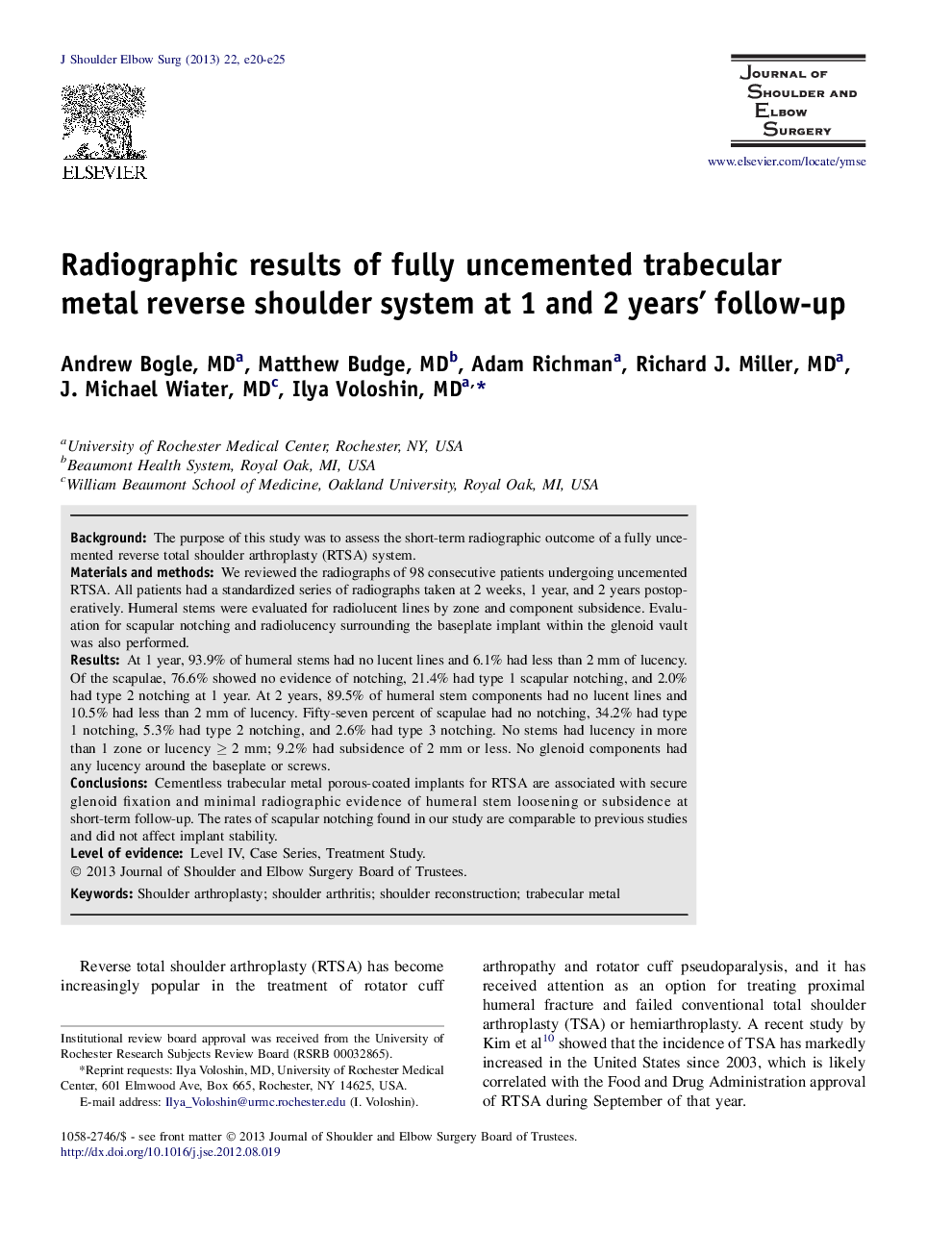| Article ID | Journal | Published Year | Pages | File Type |
|---|---|---|---|---|
| 4075035 | Journal of Shoulder and Elbow Surgery | 2013 | 6 Pages |
BackgroundThe purpose of this study was to assess the short-term radiographic outcome of a fully uncemented reverse total shoulder arthroplasty (RTSA) system.Materials and methodsWe reviewed the radiographs of 98 consecutive patients undergoing uncemented RTSA. All patients had a standardized series of radiographs taken at 2 weeks, 1 year, and 2 years postoperatively. Humeral stems were evaluated for radiolucent lines by zone and component subsidence. Evaluation for scapular notching and radiolucency surrounding the baseplate implant within the glenoid vault was also performed.ResultsAt 1 year, 93.9% of humeral stems had no lucent lines and 6.1% had less than 2 mm of lucency. Of the scapulae, 76.6% showed no evidence of notching, 21.4% had type 1 scapular notching, and 2.0% had type 2 notching at 1 year. At 2 years, 89.5% of humeral stem components had no lucent lines and 10.5% had less than 2 mm of lucency. Fifty-seven percent of scapulae had no notching, 34.2% had type 1 notching, 5.3% had type 2 notching, and 2.6% had type 3 notching. No stems had lucency in more than 1 zone or lucency ≥ 2 mm; 9.2% had subsidence of 2 mm or less. No glenoid components had any lucency around the baseplate or screws.ConclusionsCementless trabecular metal porous-coated implants for RTSA are associated with secure glenoid fixation and minimal radiographic evidence of humeral stem loosening or subsidence at short-term follow-up. The rates of scapular notching found in our study are comparable to previous studies and did not affect implant stability.
